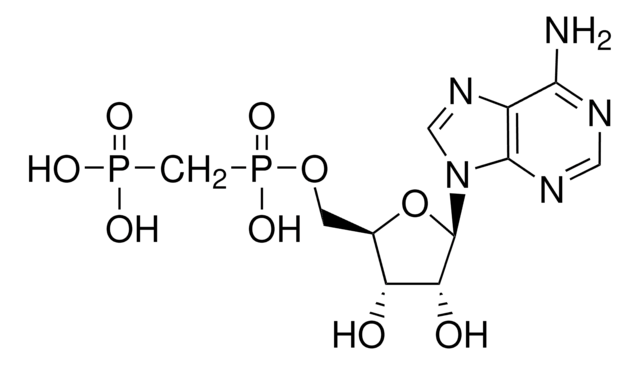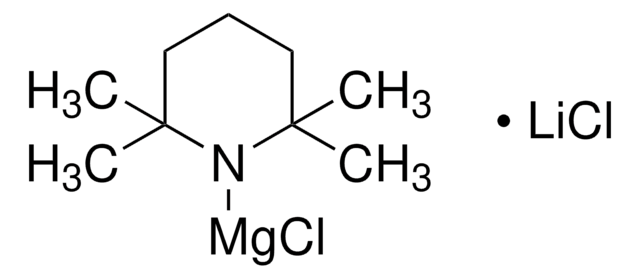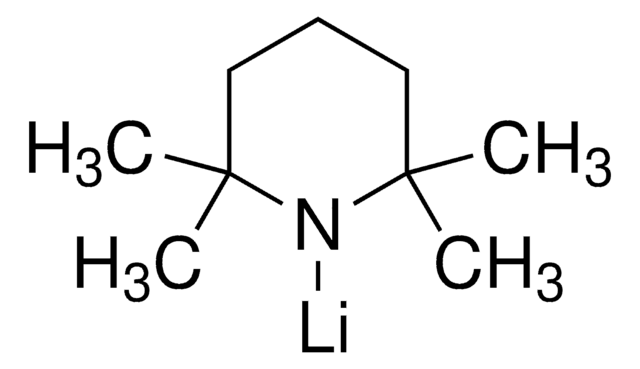All Photos(1)
About This Item
Linear Formula:
ZnCl2
CAS Number:
Molecular Weight:
136.30
MDL number:
UNSPSC Code:
12352302
PubChem Substance ID:
NACRES:
NA.55
form:
liquid
Recommended Products
form
liquid
Quality Level
concentration
0.5 M in THF
470-600 mmol/L (silver nitrate titration)
density
0.948 g/mL at 25 °C
SMILES string
Cl[Zn]Cl
InChI
1S/2ClH.Zn/h2*1H;/q;;+2/p-2
InChI key
JIAARYAFYJHUJI-UHFFFAOYSA-L
Looking for similar products? Visit Product Comparison Guide
Related Categories
General description
Zinc chloride solution is a colorless liquid that contains zinc chloride dissolved in THF. Its synthesis has been reported.
Application
Zinc chloride solution was used in the synthesis of the ferrocenylarenes.
It may be used for the in situ generation of organozincate reagents by reacting with Grignard compounds and also to catalyze chloromethylation of resins for solid phase peptide synthesis.
It may be used for the in situ generation of organozincate reagents by reacting with Grignard compounds and also to catalyze chloromethylation of resins for solid phase peptide synthesis.
signalword
Danger
Hazard Classifications
Acute Tox. 4 Oral - Aquatic Chronic 2 - Carc. 2 - Eye Dam. 1 - Flam. Liq. 2 - Skin Corr. 1B - STOT SE 3
target_organs
Central nervous system, Respiratory system
supp_hazards
Storage Class
3 - Flammable liquids
wgk_germany
WGK 3
flash_point_f
-4.0 °F - closed cup
flash_point_c
-20 °C - closed cup
Choose from one of the most recent versions:
Already Own This Product?
Find documentation for the products that you have recently purchased in the Document Library.
Customers Also Viewed
Zinc chloride-catalyzed chloromethylation of resins for solid phase peptide synthesis.
Feinberg RS and Merrifield RB.
Tetrahedron, 30(17), 3209-3212 (1974)
Versatile palladium (II)-catalyzed Negishi coupling reactions with functionalized conjugated alkenyl chlorides.
Peyrat JF, et al.
Tetrahedron Letters, 44(35), 6703-6707 (2003)
Thin-layer electrochemistry of ferrocenylbenzene derivatives: Intramolecular electronic communication.
Wang MCP, et al.
Electrochimica Acta, 53(26), 7720-7725 (2008)
Michele K Sankako et al.
Pharmacological reports : PR, 64(6), 1537-1546 (2013-02-15)
The aim of this study was to evaluate the changes in testicular function of rats due to cigarette smoke exposure and the possible mechanism by which zinc protects against these alterations. Male Wistar rats (60 days old) were randomly divided
Hai-Long Jiang et al.
Journal of the American Chemical Society, 134(36), 14690-14693 (2012-08-22)
Reactions of ZrCl(4) and single or mixed linear dicarboxylic acids bearing methyl or azide groups lead to highly stable isoreticular metal-organic frameworks (MOFs) with content-tunable, accessible, reactive azide groups inside the large pores. These Zr-based MOFs offer an ideal platform
Our team of scientists has experience in all areas of research including Life Science, Material Science, Chemical Synthesis, Chromatography, Analytical and many others.
Contact Technical Service











